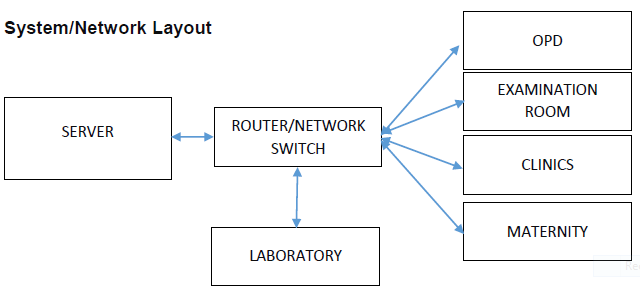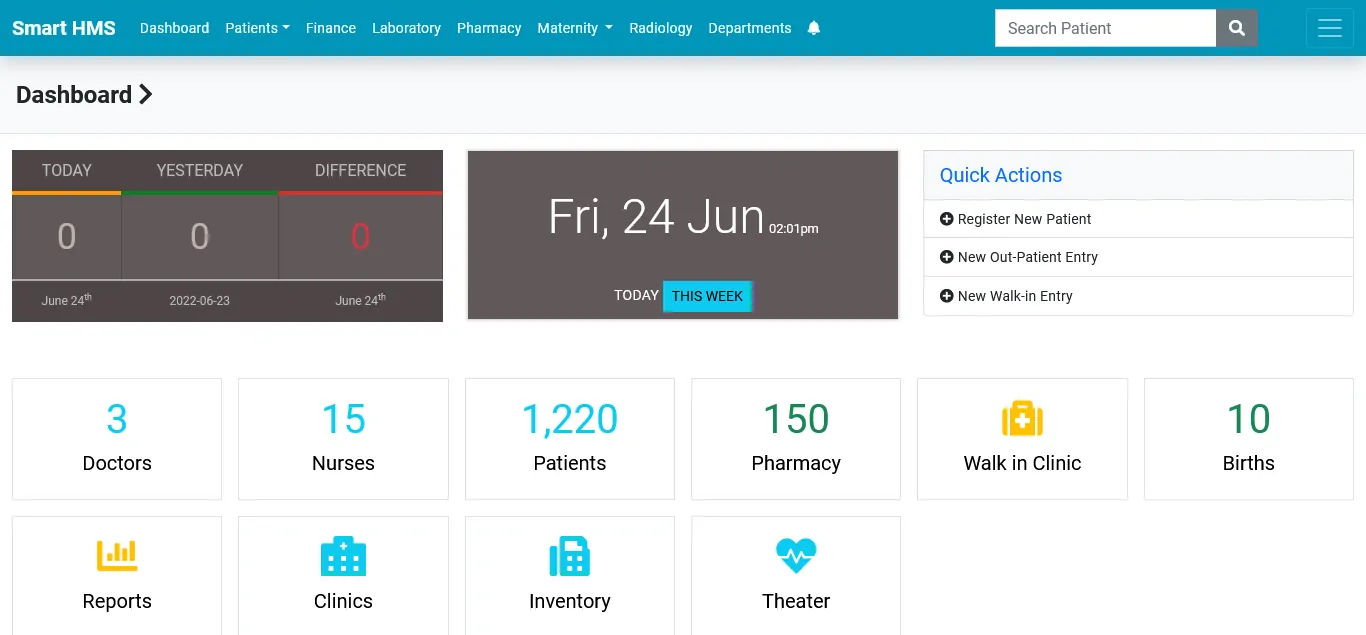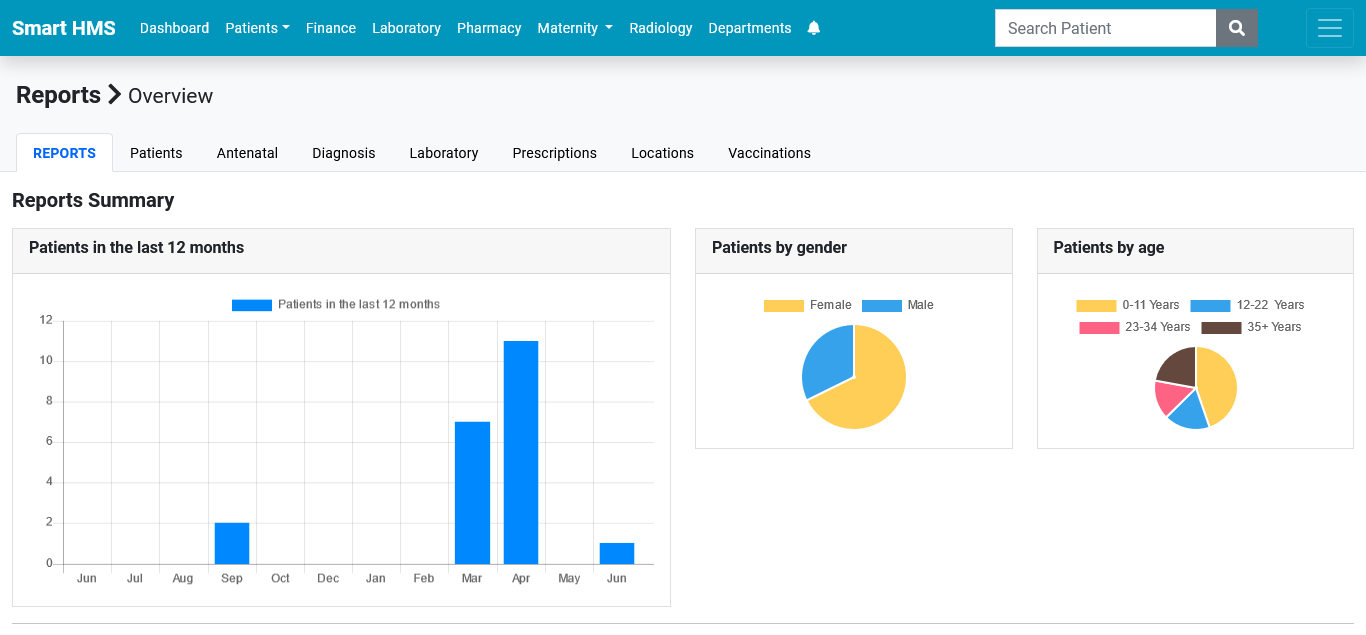
Smart HMS® is an integrated hospital information management system that automates transactions in a health facility on a patients’ visit basis and daily procedures. Smart HMS® is a software system which allows the medical personnel to type notes directly into a computer rather than writing them on paper. All patient’s medical records are kept in a database with a unique patient identifier. This allows the healthcare providers to have a comprehensive medical file for quick review, with the medical history, medications, diagnosis, prescriptions and dosages, laboratory test results, all readily available electronically in the system.
Smart HMS enables healthcare workers to manage patient’s bio data, Record patient vital signs, Record laboratory tests and results, Record patient diagnosis information, Record patients’ prescriptions and dosage information, Record a patient’s maternity information, Record antenatal visits and pregnancy progress examination reports, Record birth reports and death reports, Manage pharmacy information & drug Inventory, Export data to Microsoft Excel, Generate all required reports on an annual or monthly basis.
Generate a barcode to be attached on a patient’s identity cards, Capture biometric information such as a patients fingerprint, and verify a patient at every visit and/or at each service point, Scan patients ID cards and capture information available on the barcode, Provide a data linkage between a patient’s medical data and the HDSS database.

Smart HMS follows the logical flow of a patient in a health facility. The software system captures all relevant medical data such as symptoms, vital signs, bio-data, laboratory tests, diagnosis, prescriptions and dosages, antenatal visits, among others on each patient visit. Upon arrival, a patient goes through all the different clinical processes as directed by the health workers. Through all these processes the patient’s details are captured such as symptoms, vital signs, laboratory tests, diagnosis and prescriptions. Then before a patient is discharged a data entrant captures all the information available on the patients file for that specific day and enters it into the system. Each patient has a unique patient identifier (PID) which is also linked with the patient’s National Identification Number (NIN) or a Unique ClientID. Through the unique identifier, a visit is registered and all subsequent visits will be captured under that same identifier.

The healthcare sector in Uganda has lagged behind in the transition from paper based information management to digital information management, yet it’s an area, where there is too much data being collected from different sources and that data has to be analyzed and rich reports generated within the shortest time possible.
Typically, when one goes to a healthcare facility a paper file is opened and data about a patient is handwritten onto pieces of paper, not always legible, and then stored in a cabinet.
The process is repeated each time a patient returns to the health facility for treatment. It is extremely difficult to make good use of such unstructured data stored in this manner, and extracting value from it. A simple query such as number of female children suffering from malaria seen in a given year would take several days and the accuracy of the information is not always guaranteed.

Managing health facilities manually makes it too complex to monitor and capture different metrics such as number of patients by age, by geographic location, by diagnosis, among others. With this software system installed the hospital administrators and decision makers are able to make more informed decisions based on the real-time reports generated from the system.
It is apparent that a number of healthcare providers have over the years remained inclined to a manual health information management system not by their own choice but due to a number of factors such as not having a health information management system that electronically and systematically collects health information about individual patients.
Consider a situation whereby you visit one health facility and next time go to another one if data is not stored electronically, there is no easy way of interlinking these facilities to share patient’s history.
Through the use of hard copies of patient’s medical data, the same patient is given multiple identifiers at difference service access points, which makes it difficult to integrate these pieces of medical data for doctors say at different medical centers to share a articular patient’s medical history.


In healthcare, we need a solution where health facilities manage all their patients’ data electronically rather than rely on paper. All patients’ medical data will be stored in a single secure database, organized in a way that medical personnel can easily view a specific patient’s medical data and also the facility administrators and stake holders will be able to mine this database for value such as through real-time reports generated by the system.
The software system has an easy and simple interface meant for non IT professionals to use. This is because it was developed from scratch and not as software customized to manage clinical data. It has a comprehensive search engine that any basic user can use to make reports, a task that is usually reserved for IT professionals in most organizations.